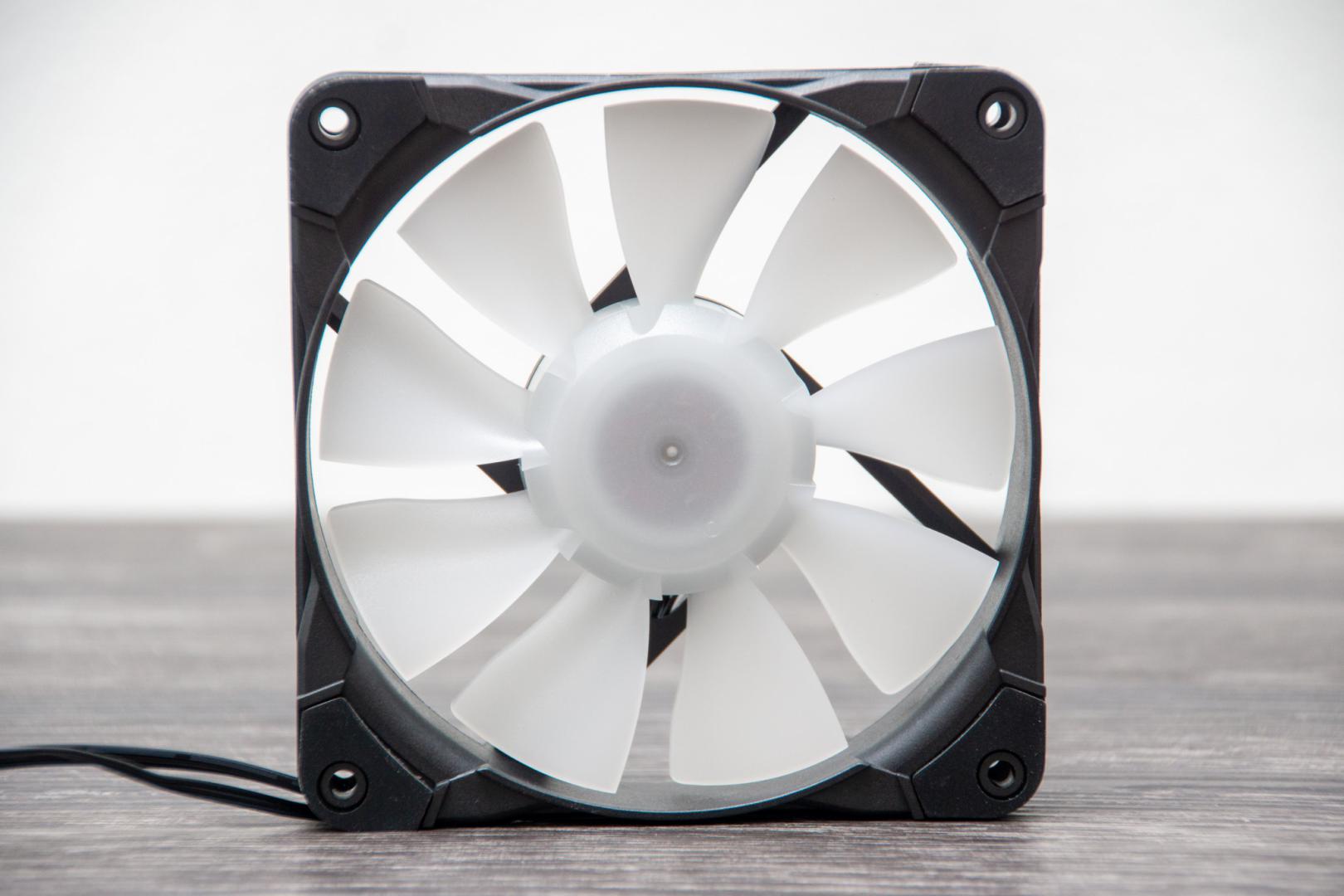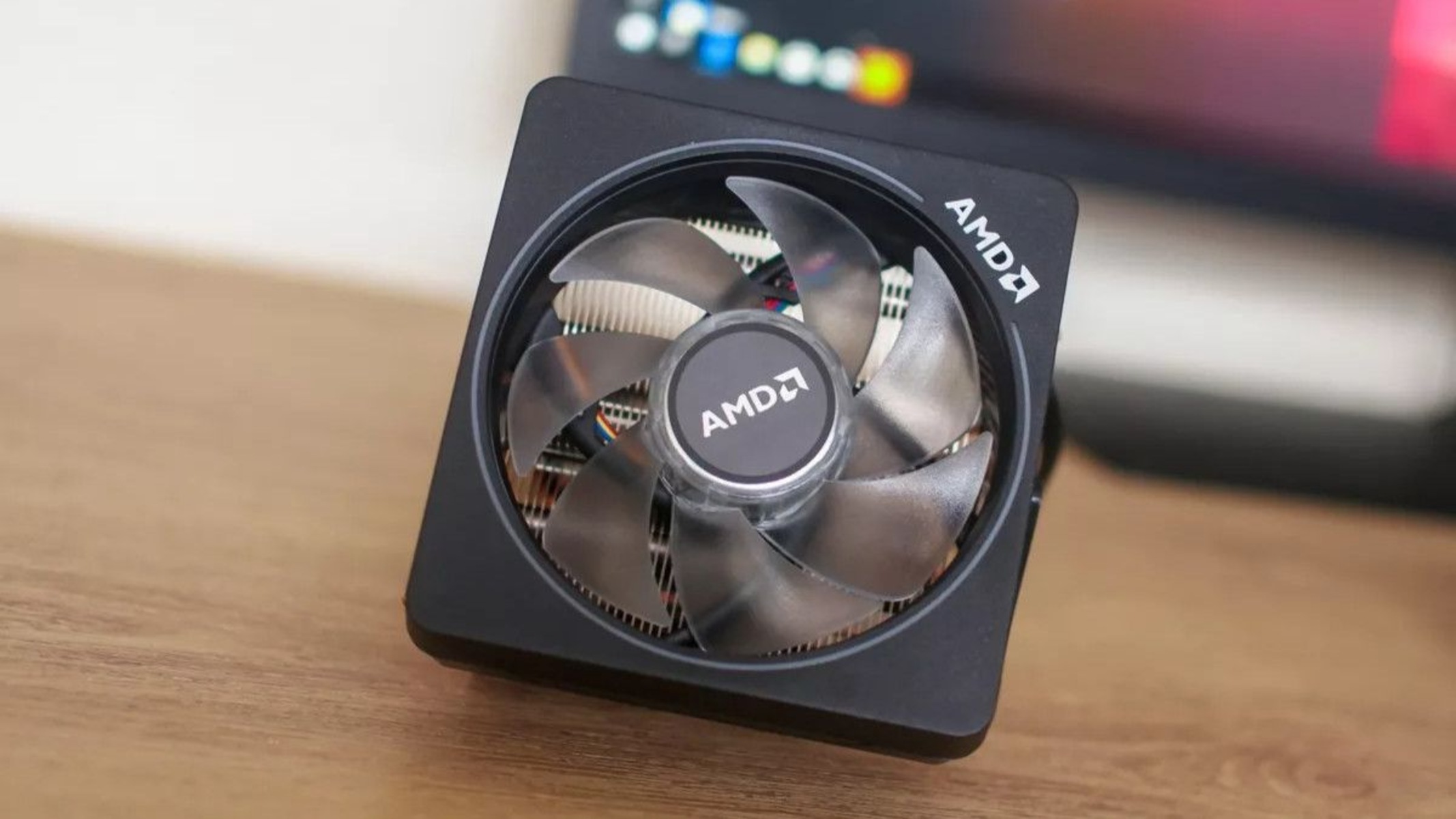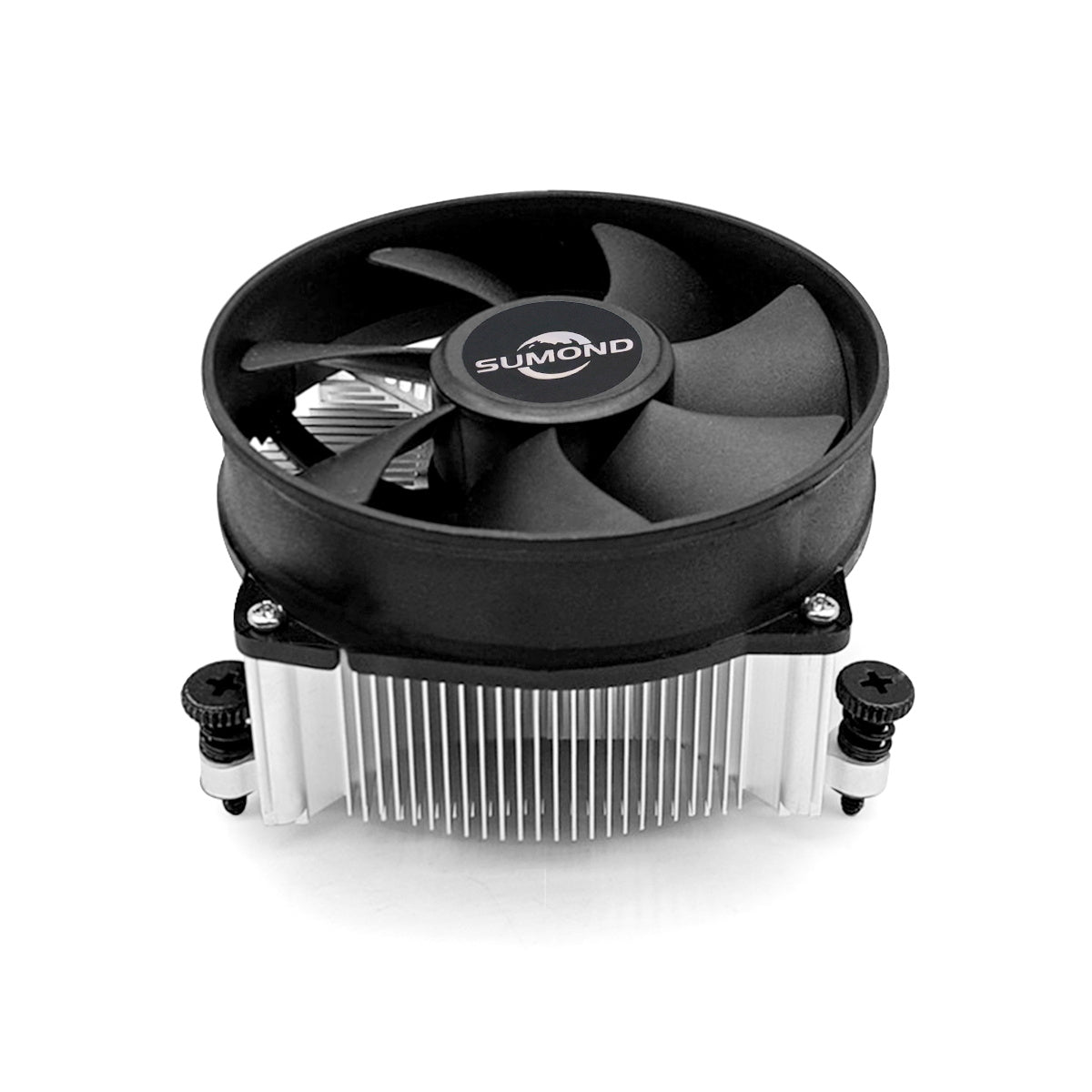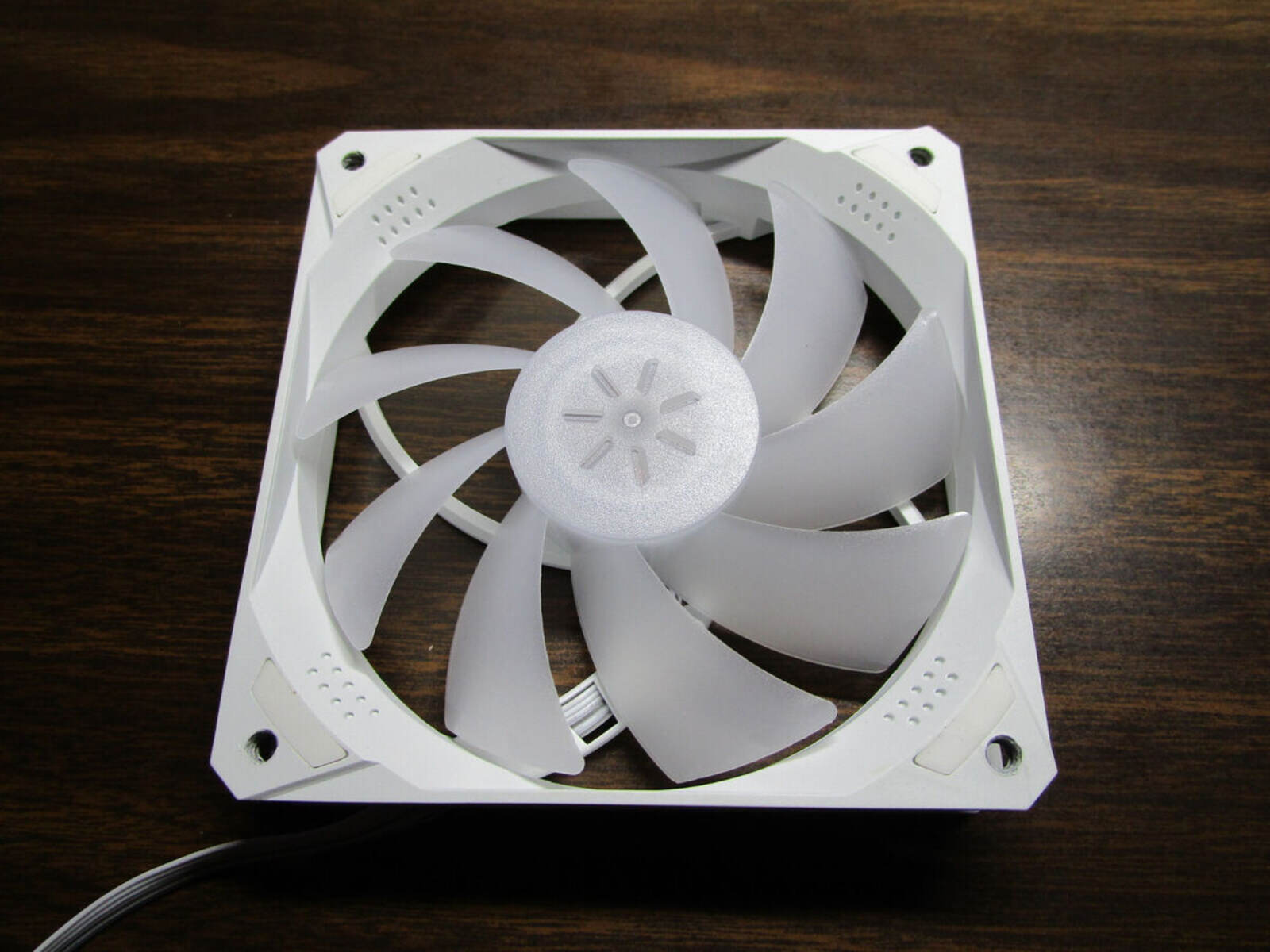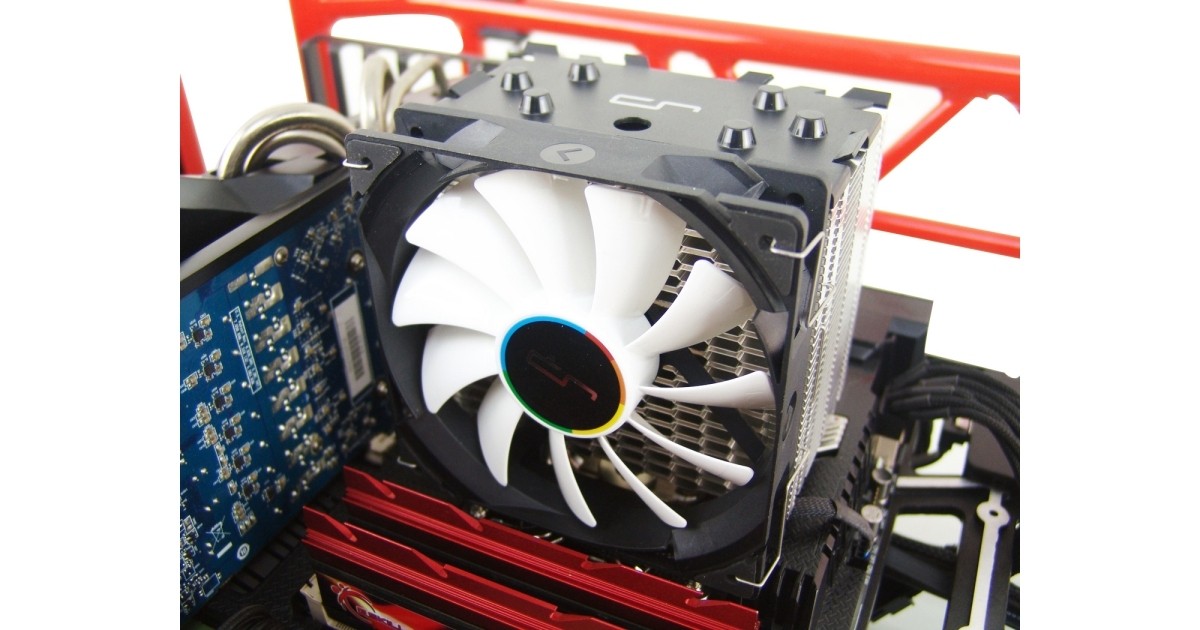Introduction
Welcome to our guide on case fans! If you’re a computer enthusiast or someone who wants to keep their computer running cool and efficiently, understanding case fans is crucial. Cooling fans are essential components that help maintain proper airflow and dissipate heat from within a computer case.
In this article, we’ll focus on one specific aspect of case fans – their size. More specifically, we’ll answer the question: “How many inches wide is a 120mm case fan?” But before we dive into that, let’s start with a brief overview of what case fans are and why they matter.
A case fan, also known as a cooling fan, is an integral part of any computer system. It is designed to circulate airflow within the computer case to prevent the components from overheating. Without proper cooling, computer components such as the CPU, GPU, and motherboard can struggle to perform efficiently and may even be at risk of damage.
Case fans come in various sizes, each with its own advantages and applications. One of the most common sizes you’ll come across is the 120mm case fan. But if you’re unfamiliar with the metric system, 120mm might not immediately tell you how wide the fan is in inches. That’s where the conversion factor comes into play.
In the following sections, we’ll explore the mm to inch conversion and break down exactly how wide a 120mm case fan is in inches. We’ll also discuss the benefits of choosing a 120mm case fan and consider other factors to keep in mind when selecting a case fan size. So, let’s dive in and find out more about the width of a 120mm case fan!
What is a case fan?
A case fan, as mentioned earlier, is a component that helps maintain proper airflow within a computer case. It is commonly referred to as a cooling fan because its primary purpose is to cool down the internal components of a computer system.
Case fans usually come in different sizes and are strategically placed within the computer case. They work by drawing in cool air from the outside and expelling hot air generated by the computer components outside the case. This constant exchange of air ensures that the components stay at an optimal temperature, preventing overheating.
Overheating can have serious consequences for a computer system. It can lead to decreased performance, instability, and even permanent damage to expensive components. By using one or more case fans, you can effectively cool down your computer and prolong its lifespan.
Case fans are typically connected to the motherboard or a dedicated fan controller using a 3-pin or 4-pin connector. The motherboard or fan controller regulates the fan’s speed, allowing you to control the airflow and noise level based on your preferences and system requirements.
Besides cooling down the components, case fans also help to remove dust and other particles that may accumulate inside the computer case. Dust can hinder proper airflow and cause additional heat buildup, so having case fans in place helps to maintain a clean and dust-free environment inside the case.
It is worth noting that case fans work in conjunction with other cooling components, such as CPU coolers and GPU fans. While case fans are responsible for overall airflow within the case, CPU coolers and GPU fans focus on cooling specific components. Together, these cooling components ensure that the entire system remains properly cooled.
Now that we have a clear understanding of what case fans are and why they are important for a computer system, let’s dive deeper into the specific sizes of case fans and explore the width of a 120mm case fan in inches.
Understanding fan sizes
When it comes to case fans, one of the most important factors to consider is their size. The size of a case fan is usually measured in millimeters (mm) and refers to the width of the fan’s frame. Understanding fan sizes is crucial when selecting the right fan for your computer case.
Case fans come in a variety of sizes, with the most common options being 120mm, 140mm, 200mm, and 230mm. These numbers represent the width of the fan, but if you’re accustomed to inches, it may not be immediately clear how wide each fan size is.
To convert millimeters to inches, you can use a simple conversion factor: 25.4mm equals 1 inch. By dividing the width of a case fan in millimeters by 25.4, you can find its approximate width in inches. For example, a 120mm case fan would be roughly 4.72 inches wide (120 divided by 25.4).
It’s important to note that the width measurement is not the only factor to consider when choosing a case fan. The overall height and depth of the fan can also vary between different models and manufacturers. These dimensions are usually mentioned alongside the width measurement, providing a comprehensive understanding of the fan’s physical size.
When selecting a case fan size, there are a few factors to consider. First, you should check the specifications of your computer case to determine the maximum fan size it can accommodate. This information is usually provided by the case manufacturer and can be found in the product manual or on the manufacturer’s website.
Alongside compatibility, you should also consider your specific cooling needs. Larger fans generally provide higher airflow with lower RPM (revolutions per minute), resulting in quieter operation. On the other hand, smaller fans can fit in tight spaces or be used for targeted cooling on specific components.
Additionally, factor in the number of available fan mounts within your case. If you have limited fan mounting points, opting for larger fans might be more efficient as they can move more air with fewer fans.
Now that we understand how fan sizes are measured and what factors to consider when selecting a case fan size, let’s explore the specific width measurement of a 120mm case fan in inches.
The mm to inch conversion
As mentioned earlier, case fan sizes are typically measured in millimeters (mm). However, if you’re more familiar with inches, it’s useful to understand the mm to inch conversion to determine the exact width of a case fan.
The conversion factor between millimeters and inches is straightforward: 25.4mm equals 1 inch. This means that to convert a measurement from millimeters to inches, you divide the value by 25.4.
For example, let’s consider a 120mm case fan. To determine its width in inches, you would divide 120 by 25.4. The result is approximately 4.72 inches.
Similarly, if you have a 140mm case fan, dividing 140 by 25.4 gives you a width of around 5.51 inches. Likewise, a 200mm case fan would be approximately 7.87 inches wide, and a 230mm case fan would measure about 9.06 inches in width.
It’s important to note that these measurements are approximate due to rounding. Additionally, keep in mind that the width measurement is not the only dimension to consider when selecting a case fan. The overall height and depth can vary between different fan models and manufacturers as well.
Understanding the mm to inch conversion allows you to accurately determine the width of a case fan in inches. This information is valuable when selecting the appropriate fan size for your computer case and ensuring proper compatibility.
With the mm to inch conversion covered, let’s move on to the specific width measurement of a 120mm case fan in inches.
How wide is a 120mm case fan?
A 120mm case fan is a common and popular choice for many computer enthusiasts and builders. The width of a 120mm case fan, when converted from millimeters to inches, is approximately 4.72 inches.
This fan size provides a good balance between airflow, noise level, and compatibility with most computer cases. The 120mm width allows the fan to fit into standard fan mounting points found in computer cases, making it a versatile option for various setups.
When compared to smaller fan sizes like 80mm or 92mm, a 120mm case fan offers superior airflow due to its larger diameter. The increased size allows for the movement of more air, resulting in better cooling efficiency for the components inside the computer case.
Additionally, 120mm case fans typically operate at lower RPM (revolutions per minute) compared to smaller fans while still delivering excellent cooling performance. This translates to quieter operation, making the 120mm case fan a preferred choice for users who prioritize a quiet computing experience.
Thanks to its popularity, the market offers a wide range of 120mm case fan options from various manufacturers. These fans often come with additional features such as PWM (Pulse Width Modulation) control for precise fan speed adjustment, RGB lighting for aesthetic customization, and low-noise bearings for silent operation.
It’s important to note that while a 120mm case fan is a versatile choice, it might not be suitable for all scenarios. If you have a smaller form factor computer case or if you require more focused cooling for specific components, you may need to consider different fan sizes or configurations.
Now that we have a clear understanding of the width of a 120mm case fan, let’s explore the benefits it offers for cooling your computer system.
Benefits of a 120mm case fan
Choosing a 120mm case fan for your computer system offers several advantages. Let’s explore some of the key benefits this fan size provides:
1. Effective cooling: A 120mm case fan provides a good balance between airflow and size, allowing for efficient cooling of various computer components. It can effectively dissipate heat generated by the CPU, GPU, motherboard, and other components, helping to maintain optimal operating temperatures.
2. Quiet operation: Despite its larger size, a 120mm case fan is engineered to run at lower RPM, resulting in quieter operation. This is particularly beneficial for users who prioritize a noise-free computing experience or work in a quiet environment.
3. Versatile compatibility: Many computer cases are designed to accommodate 120mm case fans, making this fan size widely compatible. Whether you have a mid-tower, full-tower, or small form factor case, chances are it will have mounting points for 120mm fans.
4. Wide variety of options: Due to its popularity, the market offers an extensive selection of 120mm case fans from various manufacturers. This provides you with a range of choices in terms of performance, aesthetics, and additional features such as PWM control, RGB lighting, and advanced bearing technology.
5. Cost-effective: 120mm case fans are often reasonably priced, making them a cost-effective cooling solution for your computer. They strike a good balance between affordability and performance, allowing you to achieve efficient cooling without breaking the bank.
6. Ease of installation: Installing a 120mm case fan is typically straightforward, thanks to standardized mounting points and connectors. Most computer cases have dedicated spots for these fans, and they can be easily connected to the motherboard or a fan controller.
7. Dust and debris management: Another advantage of using a 120mm case fan is its ability to help manage dust and debris inside your computer case. These fans help create positive air pressure, pushing out hot air and minimizing the ingress of dust, which can help reduce maintenance and improve the longevity of your components.
Overall, a 120mm case fan offers efficient cooling, quiet operation, compatibility, and a wide range of options—all at an affordable price point. These benefits make it a popular choice among computer enthusiasts and builders seeking optimal cooling performance for their systems.
Now that we understand the benefits of a 120mm case fan, let’s consider other factors to keep in mind when selecting a case fan size.
Factors to consider when selecting a case fan size
When choosing a case fan for your computer system, the size is a crucial factor to consider. While the 120mm case fan offers many benefits, there are other factors to keep in mind when selecting a fan size. Let’s explore some of these factors:
1. Case compatibility: Before selecting a case fan size, check your computer case’s specifications to ensure compatibility. Some cases may have specific mounting points that accommodate only certain fan sizes. Consider the available space and support for various fan sizes in your case.
2. Cooling requirements: Assess the cooling needs of your computer system. High-performance components, overclocking, and intensive tasks might require more powerful cooling solutions. In such cases, larger fans like 140mm or 200mm can provide better airflow and heat dissipation.
3. Noise preferences: If having a quiet system is a priority for you, consider the noise level of the fans. Smaller fans tend to run at higher RPM and can produce more noise compared to larger ones. It’s worth considering low-noise models or fans with noise dampening features if silence is crucial to you.
4. Available fan mounts: Evaluate the number and placement of fan mounts in your case. Larger cases often have more fan mounting options, allowing you to install multiple smaller fans or fewer larger fans. Assess these options to determine the most efficient setup for your cooling needs.
5. Aesthetic appeal: While not strictly related to performance, the visual aspect of your case fans can influence your overall build’s aesthetics. Consider the design, LED lighting, and color schemes available with different fan sizes to create a cohesive and visually appealing system.
6. Budget: Cost is an essential consideration for many users. Evaluate the prices of different fan sizes and determine which size offers the best balance between performance and cost-effectiveness.
7. Future expandability: Think about future upgrades and expandability. If you anticipate adding more components or making substantial changes to your system later on, consider if your chosen fan size will accommodate these future modifications.
By considering these factors, you can make a more informed decision and choose the most suitable fan size for your specific requirements.
Now that we’ve explored the factors to consider when selecting a case fan size, let’s summarize the key points covered in this guide.
Conclusion
In this guide, we’ve explored the world of case fans and specifically focused on the width of a 120mm case fan. We learned that case fans play a crucial role in computer cooling by ensuring proper airflow and preventing overheating of components.
We discussed the mm to inch conversion, which revealed that a 120mm case fan is approximately 4.72 inches wide. This fan size offers several benefits, including effective cooling, quiet operation, compatibility with many computer cases, and a wide variety of options to choose from.
However, we also discussed the importance of considering other factors when selecting a case fan size. These factors include case compatibility, cooling requirements, noise preferences, available fan mounts, aesthetic appeal, budget, and future expandability.
By evaluating these factors and making an informed decision, you can choose the case fan size that best suits your specific needs and preferences.
Remember, the width of a case fan is only one aspect to consider. Pay attention to factors such as fan speed, airflow, and static pressure as well, as these will also impact the overall effectiveness of your cooling solution.
We hope this guide has provided you with valuable insights into case fans and size selection, empowering you to make a well-informed decision for your computer cooling needs. Whether you choose a 120mm case fan or another size, may your computer stay cool and perform optimally!







